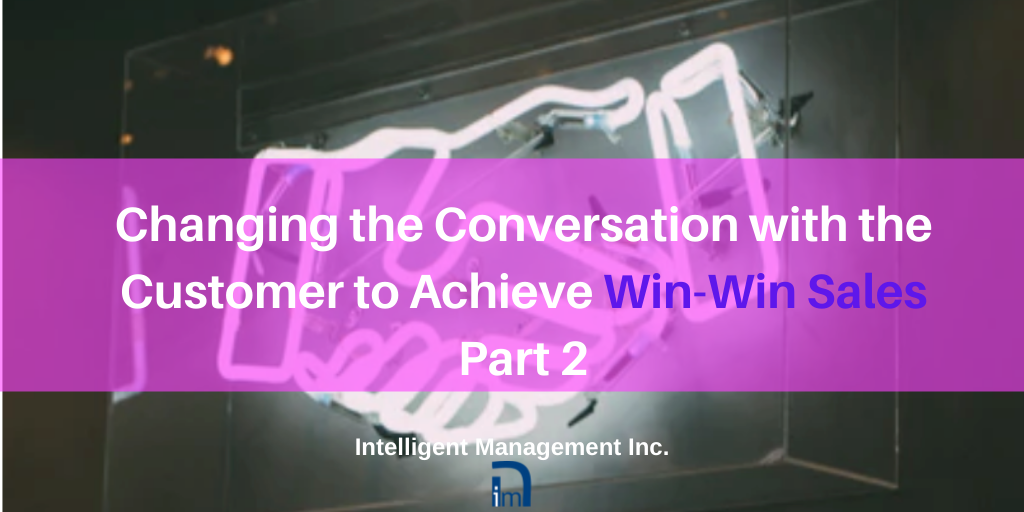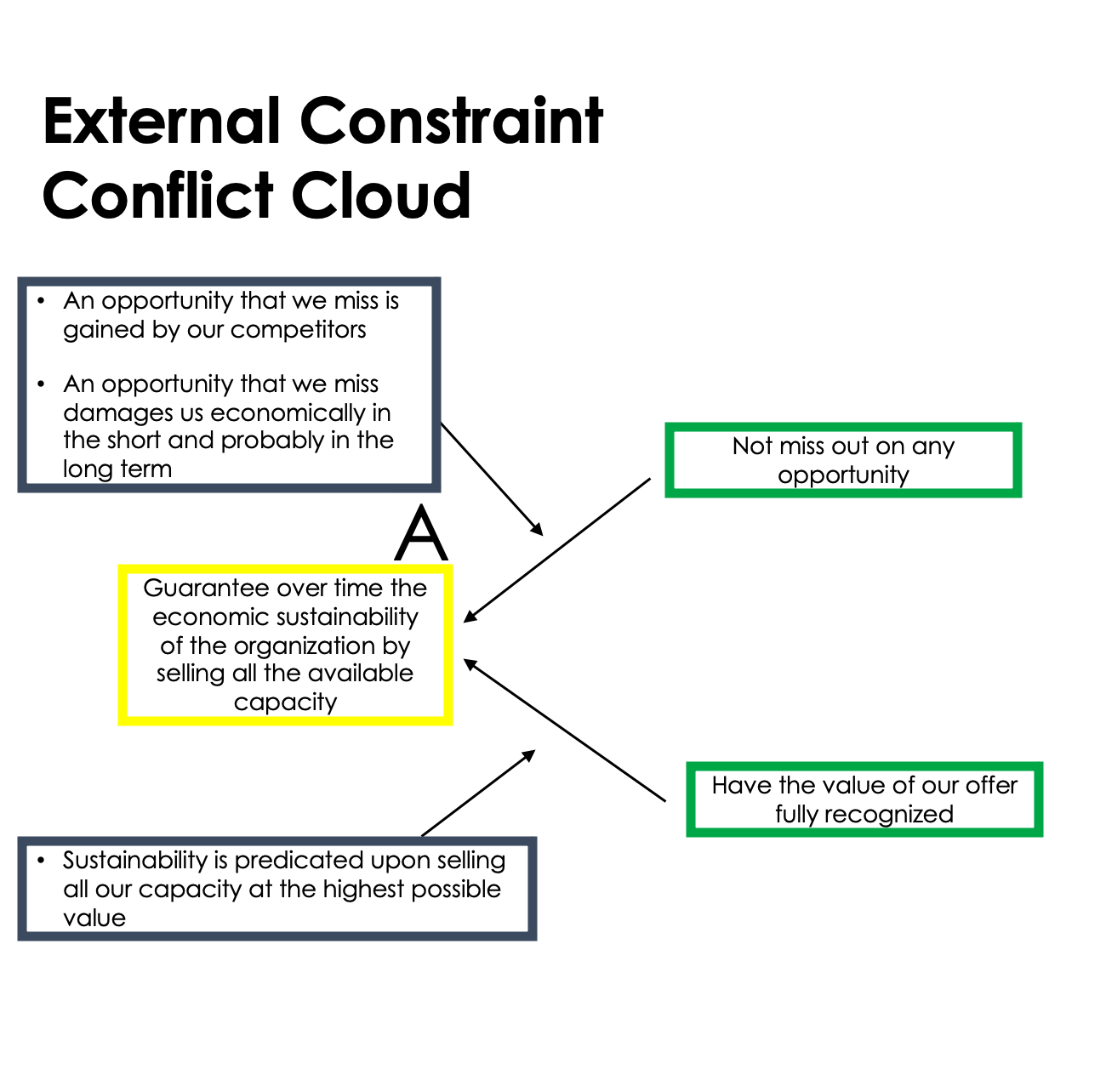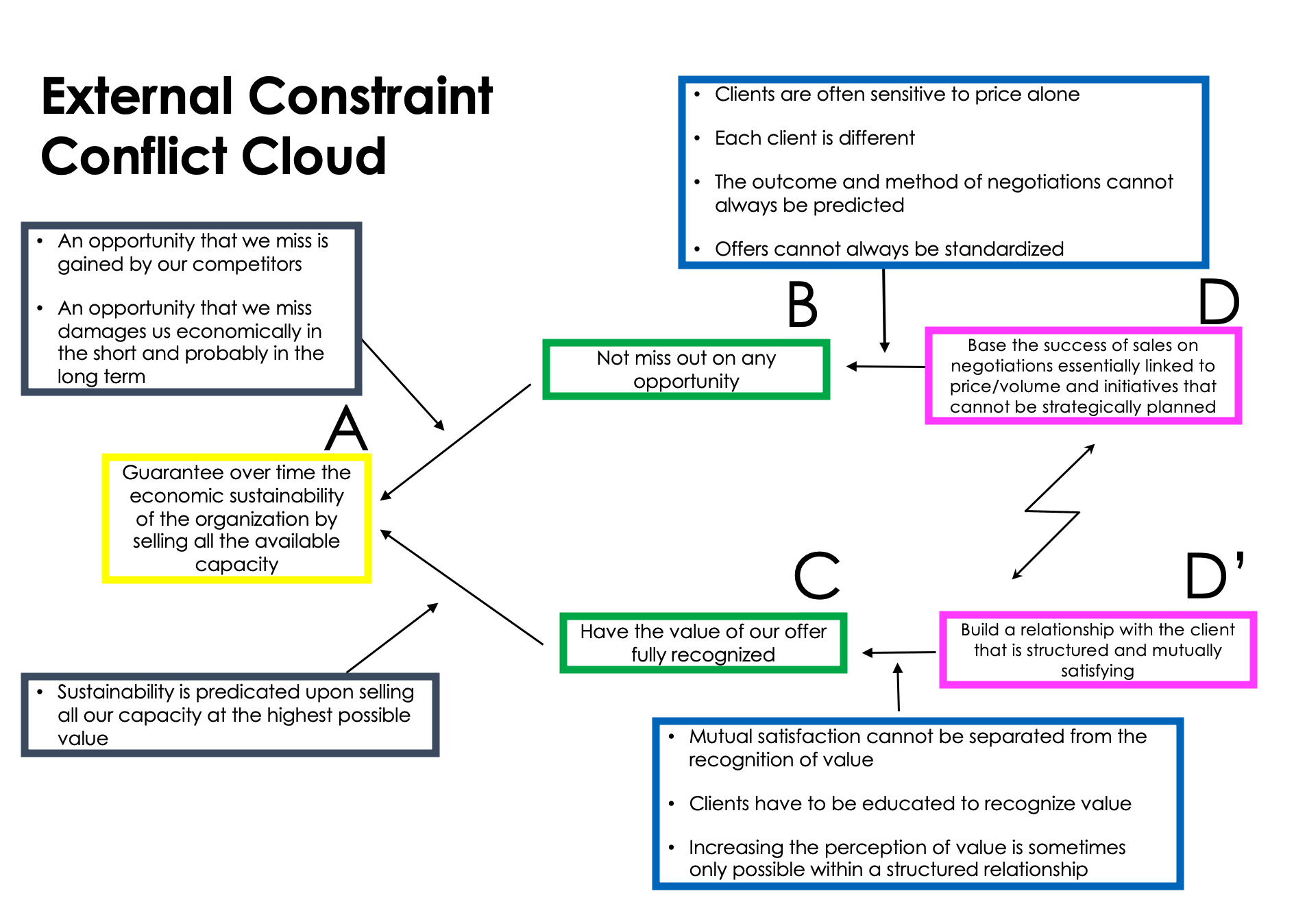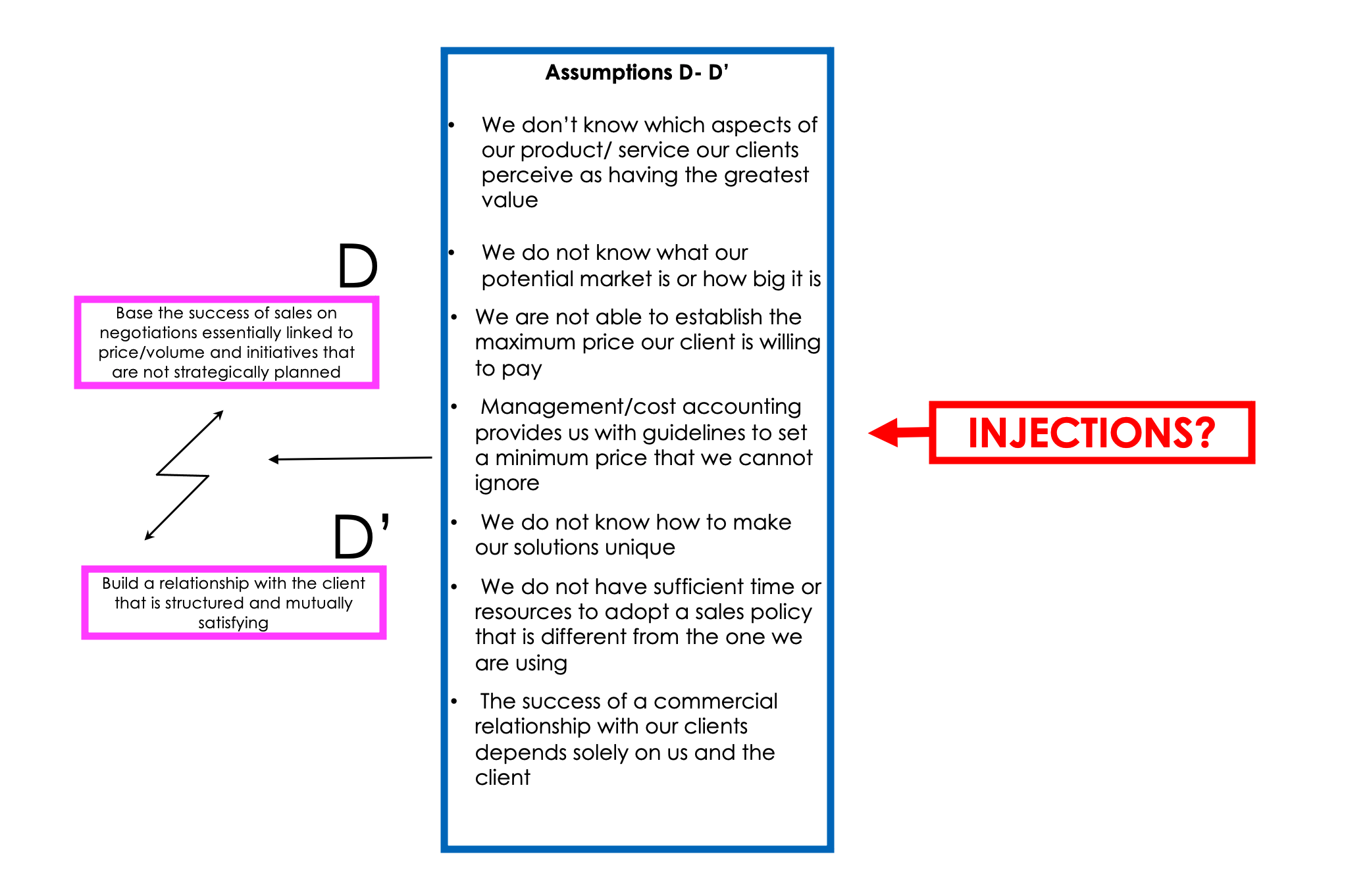
One of the greatest opportunities that businesses have today lies in changing the conversation with their customer to alter the perception the customer has of them in a positive way. This sounds like a good idea but how can you actually do that? Fortunately, there is a highly effective and structured way that we can adopt to create precisely this shift and build a relationship that leads to win-win sales.
This structured approach comes from the Theory of Constraints. It is something we have been guiding businesses to adopt for over 20 years and, when adopted correctly, it can lead to growth that is exponential. It is called External Constraint. Why External? A constraint is labeled “external” when we realize that the demand for our products is fundamentally lower than what we could physically produce. In other words, it is external when what constrains us is “sales”.
The Knowledge buried in Goldratt’s book ‘It’s Not Luck’
It took us considerable time and effort to extract and rebuild all the detailed knowledge we possess about external constraint from Goldratt’s book “It’s Not Luck, and we can say that after many years of exposure to it in practice, the external constraint algorithm works incredibly effectively. It does, however, require a considerable shift in mindset on the part of the sales team. The job is no longer about “selling at” people based on pure persuasion techniques, gift of the gab, and a price list. It becomes sales as part of detailed conversation with the customer about how everybody involved can make things better in a win–win way. It requires meticulous work in order to do the following:
■ Identify the market through accurate segmentation
■ Establish a price based on TVC (totally variable cost) involved in delivering the product/service and the constraint time it absorbs
■ Increase market awareness of the value of our offer
■ Create an “unrefusable” offer for the client based on the Undesirable Effects (UDEs) they experience and their Core Conflict
■ Show the entire value chain involved the advantages of cooperation
Understanding the customer in a whole new way
When we present an offer, no matter how good it is, we must also be aware that customers and suppliers will go through the six levels of resistance that we mentioned in Part 1 of this post. By using the appropriate Thinking Process for each level or resistance, we can work with them in the direction of finding an agreement.
We need to SEE our customers and suppliers, the way we see a system. How can we do that? By understanding their point of view, and that means understanding their challenges (UDEs), and their legitimate needs regarding the market. Everybody has their own core conflict cloud and the more we know about it the more we understand about how we can all interact for mutual benefit.
Moreover, every time we present the customer with a new solution to an existing problem they are experiencing, what we actually do is create innovation. The essence of innovation is to remove a limitation, thus breaking through to a new and better reality and that is what the External Constraint solution for win-win sales helps us to model and reproduce whenever we need to.
Framing the problem correctly to find the systemic solution for win-win sales
As with all the solutions in the Theory of Constraints, External Constraint starts with a fundamental conflict. The goal is clear: “Guarantee over time the economic sustainability of the organization by selling all the available capacity”. There are two legitimate needs: “not miss out on any opportunity” and “have the value of our offer fully recognized”.

The two legitimate needs (green boxes) are connected to the two “conflicting positions” that are “base the success of sales on negotiations essentially linked to price/volume and initiatives that cannot be strategically planned” (D) vs “Build a relationship with the client that is structured and mutually satisfying” (D’).

The conflict exists because of the set of assumptions (or mental models) between D and D’. When we invalidate the assumptions between D and D’ in a conflict cloud, we open up the way to a breakthrough solution. External Constraint achieves precisely this with ten powerful Injections that, when put into action, transform the relationship with the customer into a partnership and create a reliable path for continuous and sustainable growth. There is a slo a set of Prerequisite Tress and Transition Trees that provide further detail the steps to be taken .
As we mentioned, it took considerable effort on our part to unearth this “hidden treasure” from Goldratt’s book ‘It’s Not Luck’ so we could share it with companies seeking sustainable growth through win-win sales. We have always shared our knowledge as we built it, and we have provided a detailed account of the External Constraint solution in our 2011 book: ‘Sechel: Logic, Language and Tools to Manage Any Organization as a Network’. Until September 30th 2021, we are offering a free PDF of Sechel with every purchase of our business novel ‘The Human Constraint’, exclusively available at www.thehumanconstraint.ca
We hope our readers will take advantage of this knowledge. It is transformative and life altering. As Goldratt would say, “The sky is not the limit” and he provides the method and tools to back up this audacious claim. We can say, after two decades of experience with this work, that he is right.
Intelligent Management has been guiding organizations to adopt a systemic approach to manage complexity and radically improve performance and growth for over 20 years through our Decalogue management methodology. The Network of Projects organization design we developed is supported by our Ess3ntial software for multi-project finite scheduling based on the Critical Chain algorithm.
See our latest books Moving the Chains: An Operational Solution for Embracing Complexity in the Digital Age by our Founder Dr. Domenico Lepore, The Human Constraint – a digital business novel that has sold in 42 countries so far by Dr. Angela Montgomery and ‘Quality, Involvement, Flow: The Systemic Organization’ from CRC Press, New York by Dr. Domenico Lepore, Dr. .Angela Montgomery and Dr. Giovanni Siepe






Leave a Reply